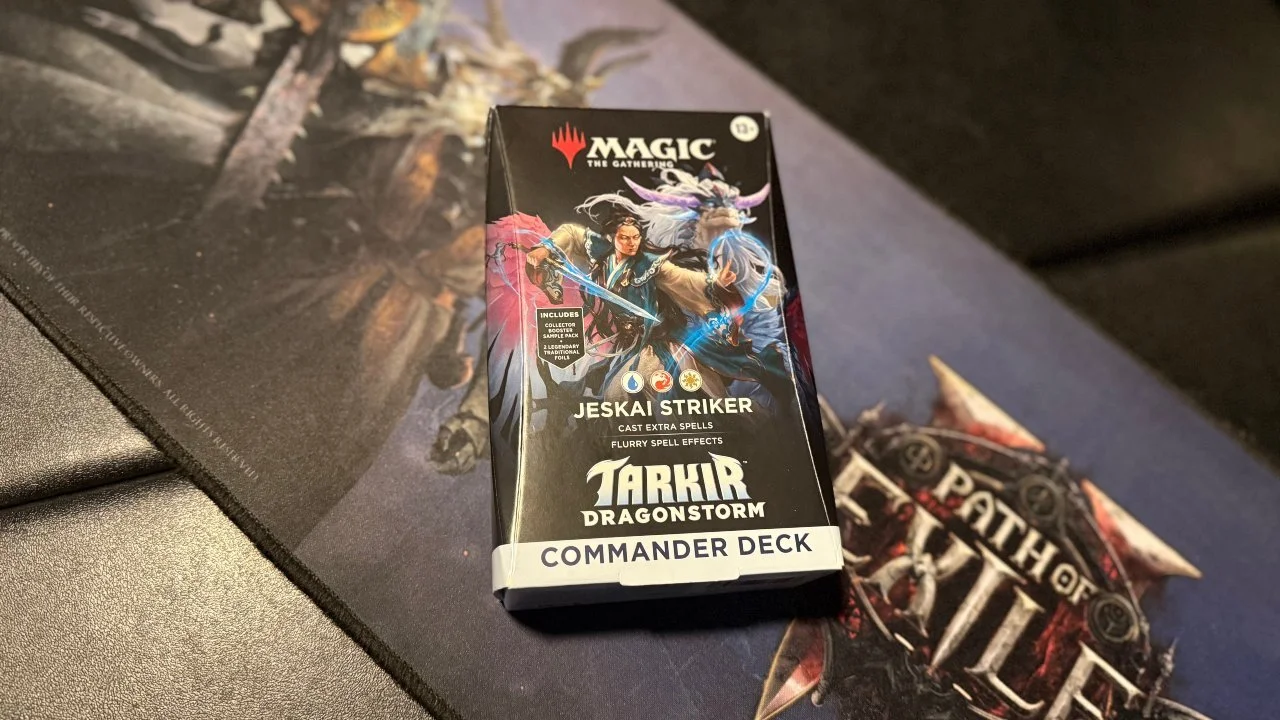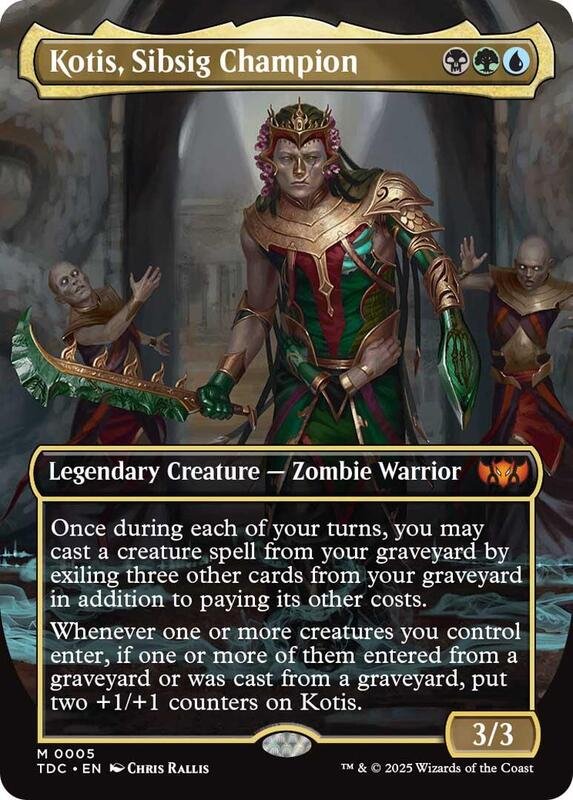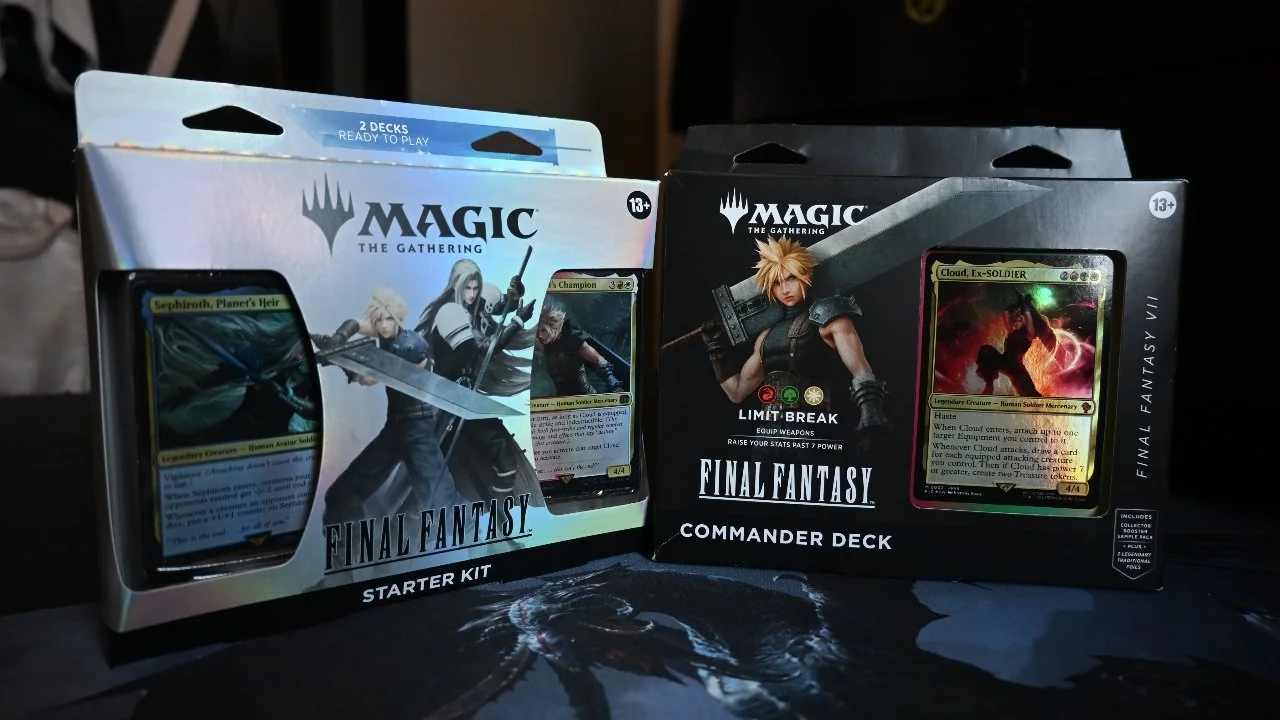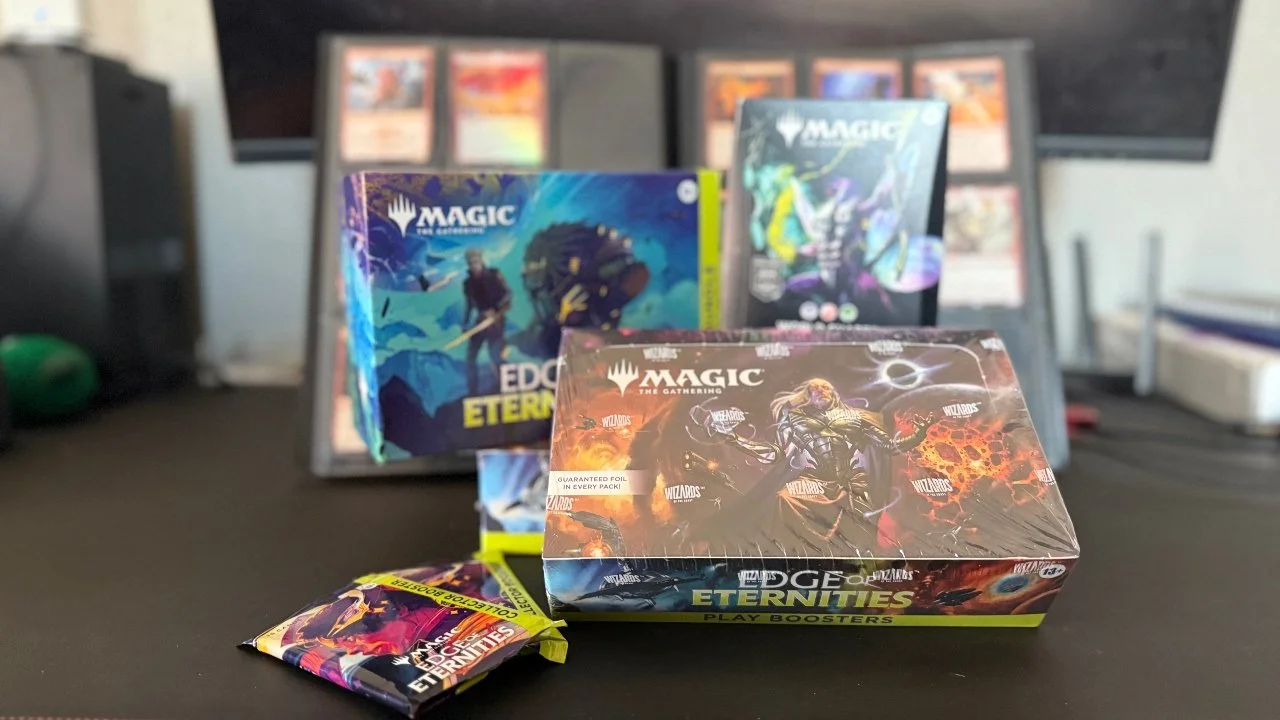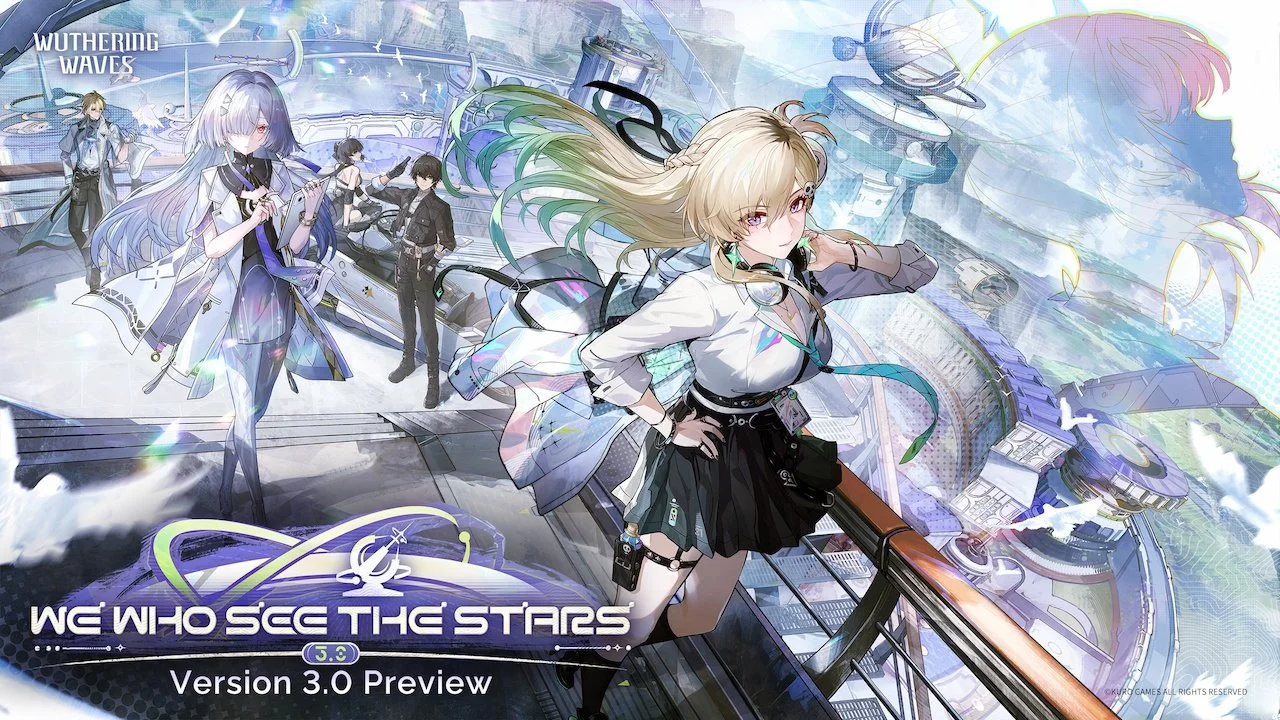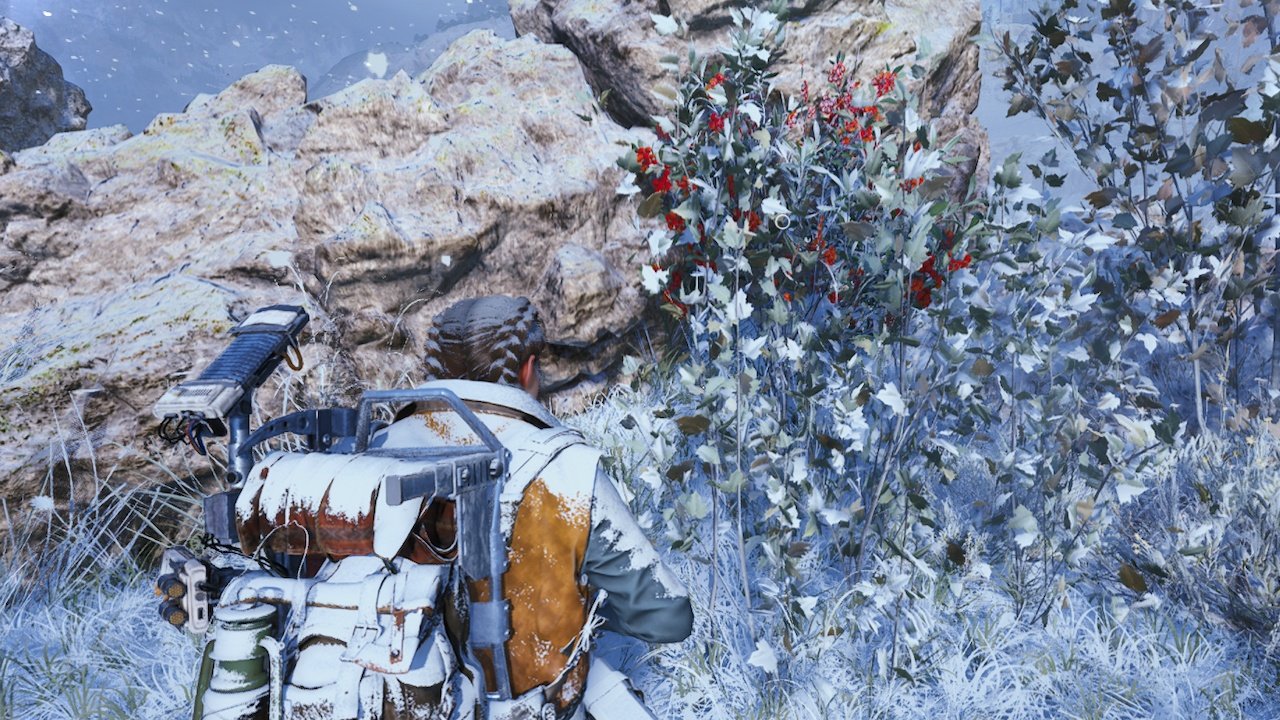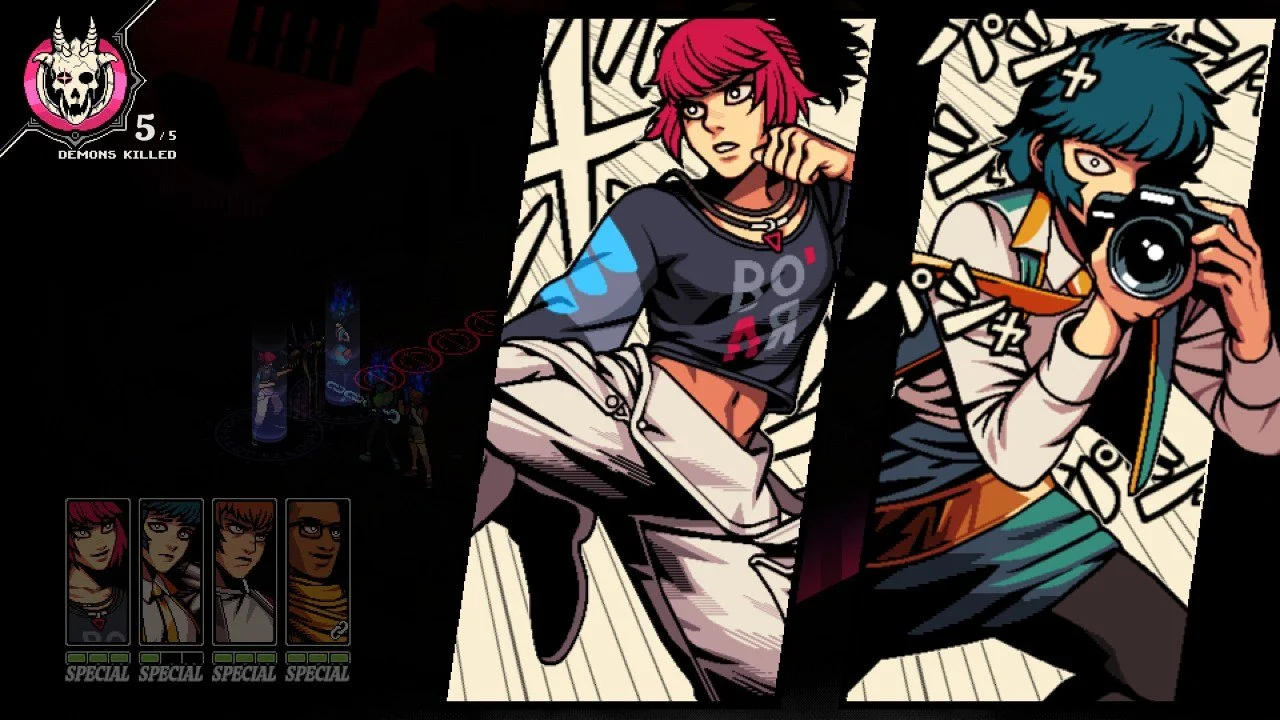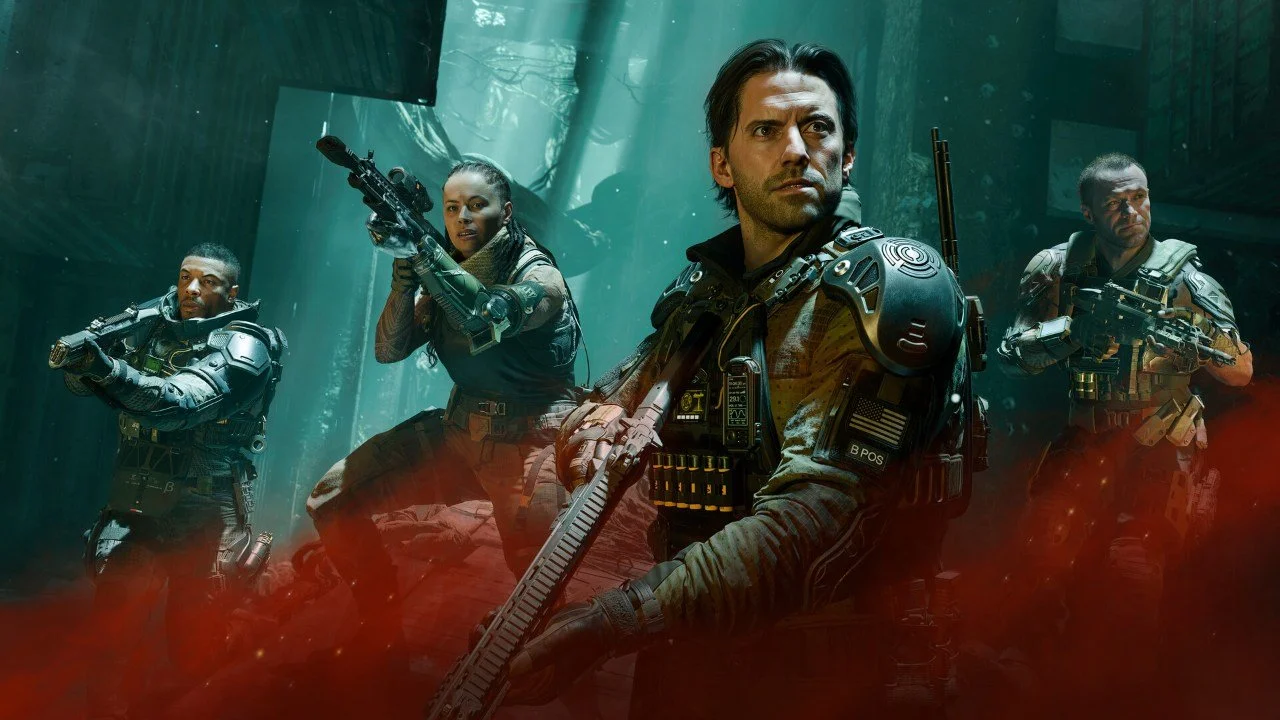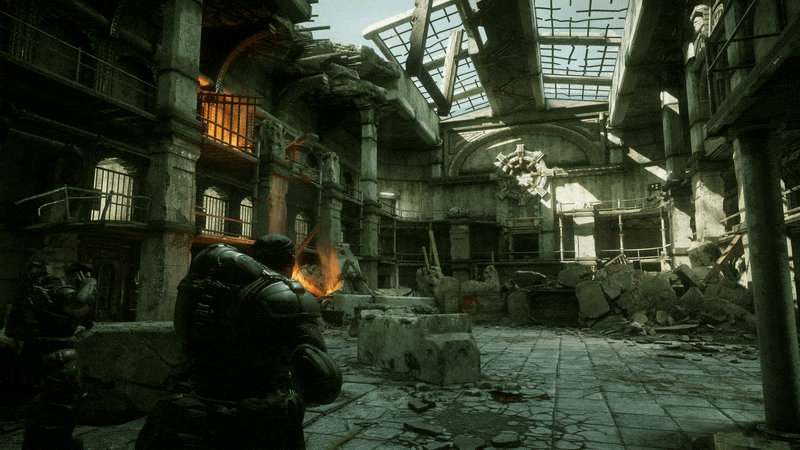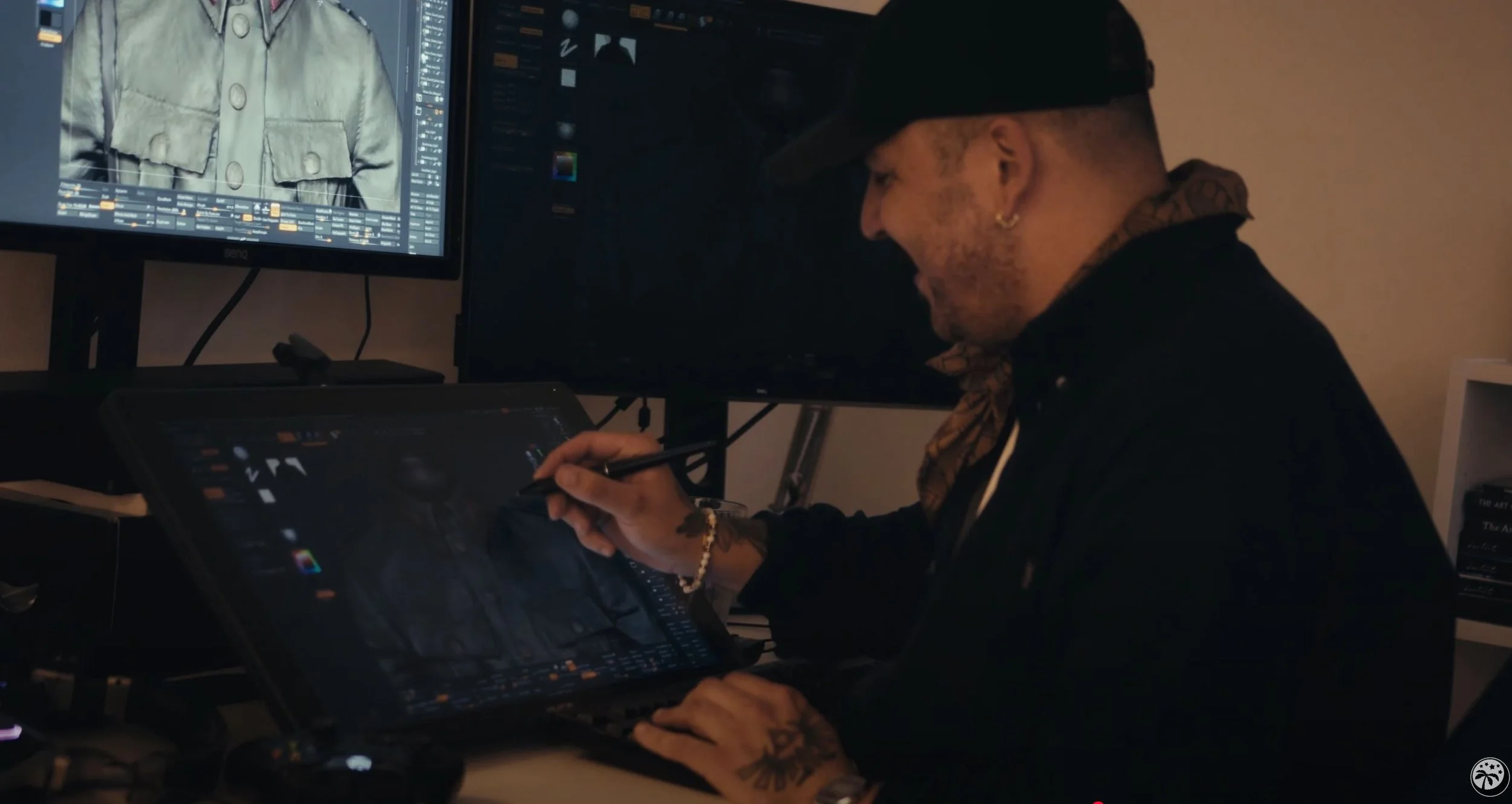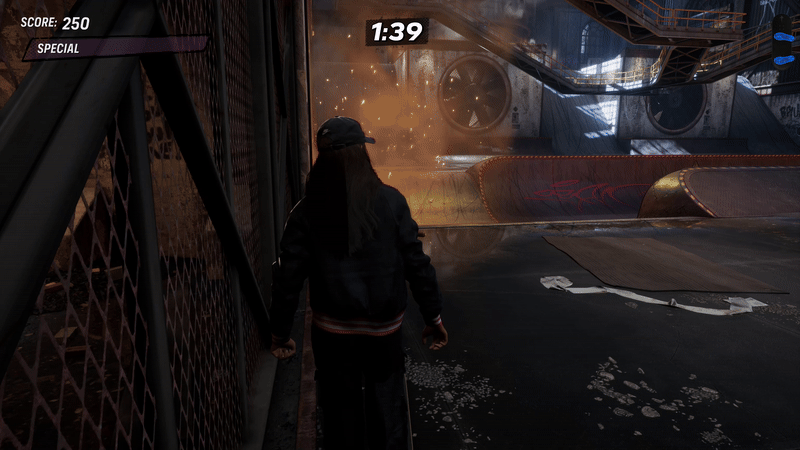What Is Tarkir: Dragonstorm?
Tarkir: Dragonstorm is the second major Magic: The Gathering set of the year—and it’s already making waves in the community. Unlike the divisive reception to Aetherdrift, fans are rallying behind Dragonstorm, hailing it as the return of "real Magic." The enthusiasm is largely due to its deep lore, flavorful mechanics, and the long-awaited return to one of Magic’s most beloved planes: Tarkir.
This set is centered around Tarkir’s five iconic clans—Abzan, Jeskai, Sultai, Mardu, and Temur—each with its own unique identity, strategy, and cultural flair. What sets Dragonstorm apart is how it masterfully weaves narrative into gameplay. In many trading card games, lore can be an afterthought, but in Magic, it’s a core part of the experience. Even Aetherdrift, despite its mixed reviews, came packed with a rich narrative backdrop.
With Tarkir: Dragonstorm, each of the five preconstructed Commander decks is themed around a specific clan and includes not only the clan’s leader (or Khan) but also their summoned Spirit Dragon—a mythical being called forth in a desperate ritual to defend Tarkir from the cataclysmic Dragonstorm. Players can choose to command their deck with either the clan’s Khan or the mighty Spirit Dragon, offering different playstyles and a strong connection to the unfolding lore.
What Is Available?
As one of the major releases in this year’s Magic: The Gathering lineup, Tarkir: Dragonstorm brings with it a full suite of products to satisfy every type of player—from collectors to casual fans to competitive Commander veterans. Here’s everything you can get your hands on:
Booster Packs - Collector’s & Play
Play Boosters are your standard packs designed for both deckbuilding and drafting. Each one contains a balanced mix of cards, perfect for players looking to explore the set’s mechanics and build exciting new decks centered around the five Tarkir clans.
Collector’s Boosters are where the real bling is. These premium packs are loaded with foils, alternate art treatments, and exclusive card styles. One of the standout features of these boosters is the Dragon-Eye Basic Lands—stunning full-art lands inspired by the gaze of each clan's Spirit Dragon—as well as shimmering holo-foil rares that are sure to turn heads at your next game night.
Bundle Box
The Bundle Box is a great way to dive into the set or gift it to someone new to Magic. Each box contains:
9 Play Booster packs
30 basic land cards (15 foil, 15 non-foil), including 10 beautiful full-art lands (5 foil, 5 non-foil)
An exclusive oversized spindown life counter (D20), featuring a unique dragon-inspired design
A card storage box and insert with set-themed artwork
Prerelease Bundles
This time around, Tarkir: Dragonstorm brings a twist to prerelease events. There are five unique prerelease kits, each themed after one of the clans: Abzan, Jeskai, Sultai, Mardu, and Temur.
Each prerelease pack includes:
5 Play Boosters
1 Seeded Booster containing cards tailored to your chosen clan’s colors and mechanics
A foil-stamped promo card
A spindown life counter and a clan-specific insert with lore and strategy tips
Even if you missed the official prerelease events, these boxes are still out there—so keep an eye out if you want a flavorful and thematic way to start your Dragonstorm journey.
Commander Decks
The highlight for many fans is the clan-based Commander decks, and this set delivers with five powerful, preconstructed decks:
Jeskai Striker Precon Deck
Jeskai Strikers – Focused on tempo, spells, and precision strikes
Temur Roar – A midrange beast-stomping deck brimming with power
Sultai Arisen – A graveyard-focused deck with eerie recursion and control
Mardu Surge – Aggressive, bold, and battle-hardened
Abzan Armor – Centered on resilience, buffs, and battlefield dominance
Each precon includes two potential commanders: a Khan representing the clan’s leadership and a Spirit Dragon summoned to fight in the titular Dragonstorm. Each deck comes ready to play right out of the box.
Commander
As mentioned earlier, Tarkir: Dragonstorm features five preconstructed Commander decks, each representing one of Tarkir’s distinct clans. These decks showcase a wide range of color combinations and playstyles, making them feel truly unique from one another. In my opinion, this set offers one of the best entry points into Commander we’ve seen in a long time.
If you’re new to Magic and looking to dive into Commander, picking up the bundle that includes all five precons is an excellent choice. It gives you immediate access to five diverse strategies—letting you explore different mechanics and archetypes. Whether you're drawn to aggressive tactics, control, midrange synergy, or graveyard recursion, you’ll find something that suits your style. From there, you can discover what kind of Magic player you really are.
Precons
Having five core playstyles of commander there is a lot to choose from so I’ll go through the list below and give you my thoughts on each precon (warning: they will be a little biased because Jeskai Strikers is literally my playstyle).
Abzan Armor (White/Black/Green)
Out of the five precons Abzan Armor is probably my least favorite—not because it’s bad, but because it feels a bit unfocused. It’s still fun to play, but the deck seems torn between two very different strategies depending on which commander you choose.
The Khan commander, Felothar the Steadfast, rewards you for building a wall—literally. The deck leans heavily into “big butt” creatures (low power, high toughness). Meanwhile, your alternate commander, Betor, Ancestor’s Voice, focuses more on life gain and +1/+1 counter synergy—an entirely different direction that doesn’t mesh as well with Felothar’s theme. Both are solid cards, but their gameplans don’t really overlap.
The deck’s main build clearly favors Felothar, a 4-mana 0/5 with a powerful and thematic ability: Each creature you control assigns combat damage equal to its toughness rather than its power. Creatures you control can attack as though they didn't have defender. Pay 3 and Tap to Sacrifice another creature: Draw cards equal to the sacrificed creature's toughness, then discard cards equal to its power.
This ability is all about value. Got a 0/6 wall lying around? Sacrifice it and draw six cards—no discards needed if it has 0 power. It’s clever, it’s efficient, and in the right circumstances, it’s terrifying. If the precon leaned harder into this strategy, it could’ve been a brick wall on defense that turns into a wrecking ball on offense.
The issue is, not every card in the deck supports this direction. There’s a noticeable split in synergy—some cards feel better suited for Betor, who plays an entirely different game.
Betor, Ancestor’s Voice is a 5-mana 3/5 Spirit Dragon with Flying and Lifelink, and they have an awesome end-step ability: At the beginning of your end step, put a number of +1/+1 counters on up to one other target creature you control equal to the amount of life you gained this turn. Then return up to one target creature card with mana value less than or equal to the amount of life you lost this turn from your graveyard to the battlefield. On paper, Betor is a powerhouse. In the right deck—a lifegain/lifedrain engine—they would be an absolute menace. But here, where the focus is more on defenders and toughness-matters cards, their abilities don’t get to shine quite as much. It creates a bit of an identity crisis for the deck.
Overall, Abzan Armor has great potential, especially if you commit to one strategy and fine-tune the deck accordingly. But out of the box, it feels like it’s trying to do two very different things at once—and that holds it back a bit.
Jeskai Striker (Blue/Red/White)
If you love casting spells, then Jeskai Strikers is your dream deck, it’s basically Magic, OOPS All Spells! This precon is everything I personally enjoy about the game: nonstop casting, clever interactions, and +1/+1 counters. The deck’s entire strategy revolves around maximizing the value of every spell you cast, and thanks to its new mechanic, Flurry you basically have a copy of every card in your deck.
The face commander, Shiko and Narset, Unified, embodies this perfectly. They’re a 4-mana 4/4 with flying, vigilance, and Flurry - Whenever you cast your second spell each turn, copy that spell if it targets a permanent or player. You may choose new targets for the copy. If you don’t, draw a card instead. It’s an incredible value engine. Not only are you rewarded for casting multiple spells per turn, but the pressure it creates—especially in a blue deck—is immense. Opponents will constantly have to wonder what tricks you’re holding up with untapped mana.
The potential combos and interactions in Jeskai Strikers are wild, and the deck encourages a dynamic, reactive playstyle that makes every turn exciting. If you're a fan of spell-slinging and outsmarting your opponents, this is the deck for you.
And if you don’t want to focus strictly on doubling your spells and giving it to the next person, the secondary commander choice is Elsha, Threefold Master: a 3 mana 1/1 with Trample, Prowess, and Whenever Elsha deals combat damage to a player, create that many 1/1 white Monk creature tokens with prowess. This is for those that are fancy a more aggressive playstyle, because with only 3 mana you can start going wide early, by turn four you can start doubling your creature count and making them harder and harder to block.
Mardu Surge (Red/White/Black)
Let me apologize in advance if I come off a little harsh with this one—I’ve never been the biggest fan of token strategies, so Mardu Surge just isn’t my favorite. That said, I’ve got to give credit where it’s due: this deck is much more cohesive than Abzan Armor. While the Abzan deck feels torn between two identities, the Mardu deck knows exactly what it wants to do—generate tokens and squeeze every bit of value out of them.
I’ll admit, I haven’t been playing Magic forever, but I’ve learned that token-heavy decks just don’t vibe with me. They start off fun, but once you're juggling a battlefield full of tokens—especially if you're adding counters—it can become overwhelming to track. (Yes, I know Jeskai Strikers does something similar, but that’s mostly just one card.)
Here, both commanders focus on tokens, but they do it in slightly different ways. The face commander is Zurgo Stormrender, a 3-mana 3/3 with Mobilize 1 - Whenever this creature attacks, create a tapped and attacking 1/1 red Warrior creature token. Sacrifice it at the beginning of the next end step. Whenever a creature token you control leaves the battlefield, draw a card if it was attacking. Otherwise, each opponent loses 1 life. That’s a ton of value packed into one card. Every time Zurgo swings, he brings a friend along—and whether that token dies in combat, gets sacrificed, or just fades away at the end of the turn, you’re either drawing a card or draining life. And with a solid 3/3 body, Zurgo can reliably attack every turn and keep the engine running. The secondary commander, Neriv, Crackling Vanguard, is a 5-mana 4/4 Spirit Dragon with Flying, Deathtouch, and When Neriv enters, create two 1/1 red Goblin creature tokens. Whenever Neriv attacks, exile a number of cards from the top of your library equal to the number of differently named tokens you control. During any turn you attacked with a commander, you may play those cards. Again—strong value, especially if you build around creating a variety of token types. I could easily see Neriv being a beast in an exile-focused deck, or one that makes a toolbox of different tokens. The issue here is that Mardu Surge generates a lot of same-named tokens, especially from Mobilize, which means you might not be getting as much mileage out of Neriv’s effect as you'd hope.
At the end of the day, this deck’s identity is crystal clear: be aggressive AF. It wants you to go wide, hit fast, and pressure your opponents every turn. And if that’s your style, you’re going to love it.
For me personally, though, it still ranks near the bottom—not because it’s bad (it's not!), but because that high-octane, token-swarm playstyle just isn’t my thing. I’d place it above Abzan Armor, but not by much.
Sultai Arisen (Black/Green/Blue)
This is probably my number two pick out of the five decks—and for a lot of players, it's their number one. Sultai Arisen is the graveyard-focused deck of the set, and honestly? It’s a powerhouse. Playing with the graveyard seems to be a go-to strategy for a ton of players, and while I find it super interesting, I just never seem to win with it. That said, this deck is built on such a strong, flexible concept that it’s hard not to be impressed.
In plain terms, this deck is all about filling up your graveyard, then casting cards from it, while passively gaining value just from doing so. And unlike some of the other decks (looking at you, Abzan), this one makes it tough to choose between its two commanders—both of them are genuinely great.
The box commander, Kotis, Sibsig Champion, is a 3-mana 3/3 with Once during each of your turns, you may cast a creature spell from your graveyard by exiling three other cards from your graveyard in addition to paying its other costs. Whenever one or more creatures you control enter, if one or more of them entered from a graveyard or was cast from a graveyard, put two +1/+1 counters on Kotis. So let’s break that down. You get to cast creatures from your graveyard, and every time one enters from the grave, Kotis just gets stronger. If you're using creatures to block, trade, or even act as recurring threats, Kotis will keep bringing them
back—and get buffed for it. That’s wild. It’s like playing a never-ending game of fetch with a zombie army, and your reward is a jacked-up commander who keeps growing.
Now the so-called “backup” commander—though I’d argue it’s a co-headliner—is Teval, the Balanced Scale, a 4-mana 4/4 Spirit Dragon with Flying and Whenever Teval attacks, mill three cards. Then you may return a land card from your graveyard to the battlefield tapped. Whenever one or more cards leave your graveyard, create a 2/2 black Zombie Druid creature token. Balanced my a**. If you don’t see the value here, read that again. You attack, mill three cards (fueling your graveyard), play an extra land from the yard, and create a zombie every time cards leave your graveyard. That’s a full-on reward package just for swinging in. You get to be aggressive and resourceful at the same time, and if Teval sticks around for more than a turn or two? You’ll be overrun with zombie tokens faster than your opponents can say “board wipe.”
Both commanders bring something unique to the table: Kotis is all about grave recursion and self-growth, while Teval leans into token generation and value-packed aggression. Either one can lead this deck and feel like the right choice.
Sultai Arisen is a beautifully synergistic deck. It offers multiple avenues to victory through recursion, land advantage, and token swarms—all while rewarding you for doing what the deck already wants to do. It’s well-built, well-balanced, and honestly, just a ton of fun to pilot.
Temur Roar (Green/Blue/Red)
Green deck go brrrrrrrrrrrrrrrr.
If you wanted dragons—oh, you got dragons. Temur Roar is the most dragon-packed precon of the set, and holy sh*t… you better hope you draw mana—or maybe not, because this deck is basically a cheat code that lets you play your massive, majestic dragons for free. Yeah, free dragons. Go ahead and scoop now. Thanks for playing. Jokes aside, Temur Roar is insanely strong, and it’s easy to see why it’s flying off shelves.
For this deck, I highly recommend leading with the dragon commander Ureni of the Unwritten, a 7-mana 7/7 Spirit Dragon with Flying, Trample, and Whenever Ureni enters the battlefield or attacks, look at the top eight cards of your library. You may put a Dragon creature card from among them onto the battlefield. Put the rest on the bottom in a random order. See what I mean? It’s straight-up cheating. Yes, they cost 7 mana—but you’re in green. You’ll ramp into that like it’s nothing. And once they hits the board, Ureni becomes your personal dragon delivery system. They’re absolutely broken for any big-creature strategy and I have zero doubt it’ll show up in plenty of pods outside the precon too.
Now, if you’d rather stick to the face commander, Eshki, Temur’s Roar, she’s no slouch either. For just 3 mana, you get a 2/2 with Whenever you cast a creature spell, put a +1/+1 counter on Eshki. If that spell’s power is 4 or greater, draw a card. If it’s 6 or greater, Eshki deals damage equal to her power to each opponent. Eshki basically gets stronger as your battlefield grows, and in return, she rewards you with card draw and burn damage—just for playing the kinds of creatures you were already planning to cast.
The drawback that I see is that this precon is full of big dragons, and those don’t come cheap. So if you’re leading with Eshki, make sure you’ve got your ramp game in check—because early on, she might be your only pressure until the dragon floodgates open.
For me, Temur sits comfortably in the middle of the pack. I’m not against big creatures, but I usually build more spell-heavy decks. That said, Temur’s commanders are so well designed, it’s hard not to be pulled in. There’s a thrill to dropping dragons for free or watching Eshki scale into a late-game threat that just keeps burning everyone down.
Now if I had to rank all the precons in order that I like them, from my favorite to my least favorite: Jeskai Strikers because I love casting spells and why not be rewarded for it, Sultai Arisen for how well the deck is put together alone, Temur Roar because Ureni is an awesome commander, Mardu Surge because at least the deck knows it’s own strategy, and lastly Abzan Armor because the deck seems too play tug of war with itself.
DIY Commanders
A lot of the other multi-color commanders are alternate versions of the percon commanders so I wanted to highlight the other mono-color commanders as well.
Taigam, Master Opportunist
A 2-mana 2/2 with Flurry — Whenever you cast your second spell each turn, copy it, then exile the spell you cast with four time counters on it. If it doesn’t have suspend, it gains suspend. (At the beginning of its owner's upkeep, they remove a time counter. When the last is removed, they may play it without paying its mana cost. If it's a creature, it has haste.)
First off, cheap commanders are always a win. If you can play your commander early, you’re already ahead—and even if it gets removed, you’ll likely have the mana to pay the commander tax. Taigam is a great example of why I love Jeskai colors: his Flurry ability is both explosive and oppressive. You’ll be pelting your opponents with spells, and every second spell will come back later for free. That looming threat will keep your opponents paranoid, especially when you leave mana up. Taigam is pure value and a blast for mono-blue spell-slingers who love casting—and re-casting—their favorite instants and sorceries.
Sarkhan, Dragon Ascendant
Sarkhan isn’t aligned with any of the five clans, which is a cool nod to Magic’s lore. As a commander, he’s perfect for mono-red Dragon decks or Dragon token builds. He’s a 2-mana 2/2 with When Sarkhan enters, you may behold a Dragon. If you do, create a Treasure token. (To behold a Dragon, choose a Dragon you control or reveal a Dragon card from your hand.) Whenever a Dragon you control enters, put a +1/+1 counter on Sarkhan. Until end of turn, Sarkhan becomes a Dragon in addition to its other types and gains flying.
If you’re playing Sarkhan, chances are you’ll have a Dragon in hand to reveal and get that treasure—which in a Dragon deck is just ramp for your next big flyer. And Sarkhan passively grows stronger just by doing what the deck already wants: playing Dragons. He’ll be soaring (and smashing) before your opponents even settle in.
Surrak, Elusive Hunter
Surrak is the only mono-green legendary creature in the set, and while he may not be the best choice for a green commander, he still offers interesting utility. He’s a 3-mana 4/3 with Trample, This Spell can’t be countered. Whenever a creature you control or a creature spell you control becomes the target of a spell or ability an opponent controls, draw a card. He’s perfect in a deck that expects a lot of targeted interaction, and while he might not dominate the board, Surrak provides consistent card draw in the face of control. He might not be the best lead to your deck, but he’ll find a home in plenty of green builds.
Sidisi, Regent of the Mire
Like I said before, gGraveyard strategies are always a fan favorite, and Sidisi is a fantastic choice for mono-black resurrection or mill decks. Sidisi is a 2-mana 1/3 with T: Sacrifice a creature you control with mana value X other than Sidisi: Return target creature card with mana value X plus 1 from your graveyard too the battlefield. Activate only as a sorcery. This is a sweet and flavorful necromancer-style effect. Sidisi makes reanimation efficient and repeatable. Sacrifice a token or smaller creature, bring back something bigger—it’s a one-way train to value town. I can easily see her leading a zombie-themed deck or any build focused on death and revival.
Anafenza, Unyielding Lineage
Anafenza is an Abzan mono white 3-mana 2/2 with Flash, First Strike, and Whenever another nontoken creature you control dies, Anafenza endures 2. (Put two +1/+1 counters on it or create a 2/2 white Spirit creature token.) Since she only triggers off nontoken creatures, you’ll want to build around low-cost creatures that you don’t mind losing—perhaps through lifegain, aristocrats, or weenie aggro strategies. Swing in, get blocked, and grow Anafenza in the process. While she may not be everyone’s cup of tea, a creative brewer could definitely unlock her potential in a uniquely resilient white deck.
Final Verdict
Tarkir: Dragonstorm is an absolute triumph of a set. Whether you’re here for the dragons, the lore, or the mechanics, it delivers on all fronts. The artwork is jaw-droppingly beautiful, with every card capturing the wild power, mysticism, and clan identity that Tarkir is known for. It’s the kind of set you can just flip through and admire even before you start building a deck.
But more than anything, Dragonstorm is a fantastic starting point for new players. The set is packed with variety—aggressive decks, control options, graveyard recursion, spell slinging, tokens, tribal synergies—you name it. This diversity of strategies makes it incredibly beginner-friendly. You can experiment, learn, and find the style of play that fits you best, all within one cohesive product.
Whether you're brand new to Magic or a veteran looking for something fresh, Tarkir: Dragonstorm hits that perfect balance of accessibility and depth. It’s creative, it’s flavorful, and it’s built for fun. I wouldn’t hesitate to recommend it to anyone ready to dive into the world of Commander—or Magic as a whole.
Tarkir: Dragonstorm is available now online, at select retailers, or you can find it at your local game stores! I highly recommend this set if you were debating getting into Magic for the first time.

